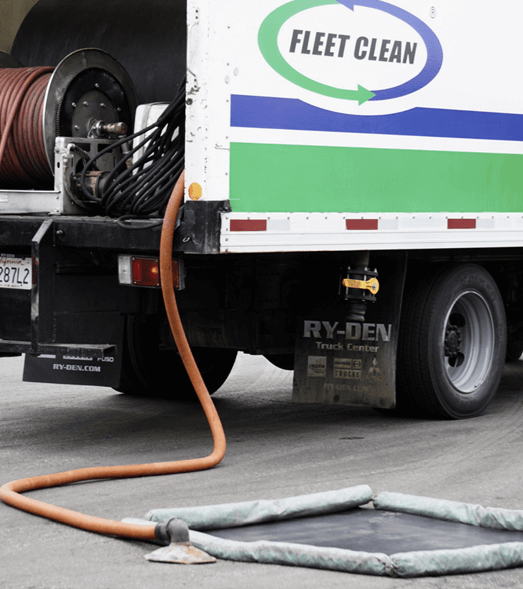The Clean Water Act establishes the basic structure for regulating discharges of pollutants into the waters of the United States and regulating quality standards for surface waters. The basis of the CWA was enacted in 1948 and was called the Federal Water Pollution Control Act, but the Act was significantly reorganized and expanded in 1972. The Clean Water Act made it unlawful to discharge any pollutant from a point source into navigable waters.
Due to growing regulations coupled with the CWA trucking companies have come under increasing pressure from State, Federal, and Local authorities to comply with regulations concerning vehicle washing. This issue becomes heightened when the terminal or facility is located near a stream or tidal area where the runoff enters a storm drain.
Contrary to popular belief present day regulations do not prohibit power-washing, although some are under that impression. The thrust of all environmental/power wash regulations is to eliminate certain contaminants found in the effluent wash water which drains into storm drains.
The effluent water from routine power-washing may contain various pollutants that are objectionable including hydrocarbons (oil and oily residues) the detergents used in the washing process and heavy metals.
The oily compounds can be easily separated, and the detergents used are biodegradable. However, we still must devise a method to prevent this water from entering storm drains without getting involved in high price treatment facilities or recycling equipment.

The Fleet Clean proposal is to provide vehicle and property owners with safe, effective, low-cost and environmentally conscience pressure washing services. We provide our customers with top tier power-washing without violating environmental regulations.
The use of our recovery system eliminates the need for any local or state permitting since there is no discharge to any storm drain or groundwater.
Fleet Clean understands this, and ensures that our customized washing programs include waste water recovery.
All Storm Water drains are sealed.
The vacuum pump within the truck will reclaim all waste water.
Waste water is transported back to Fleet Clean office and placed in a holding tank.
After all sediment has settled, the remaining water is treated and discharged.